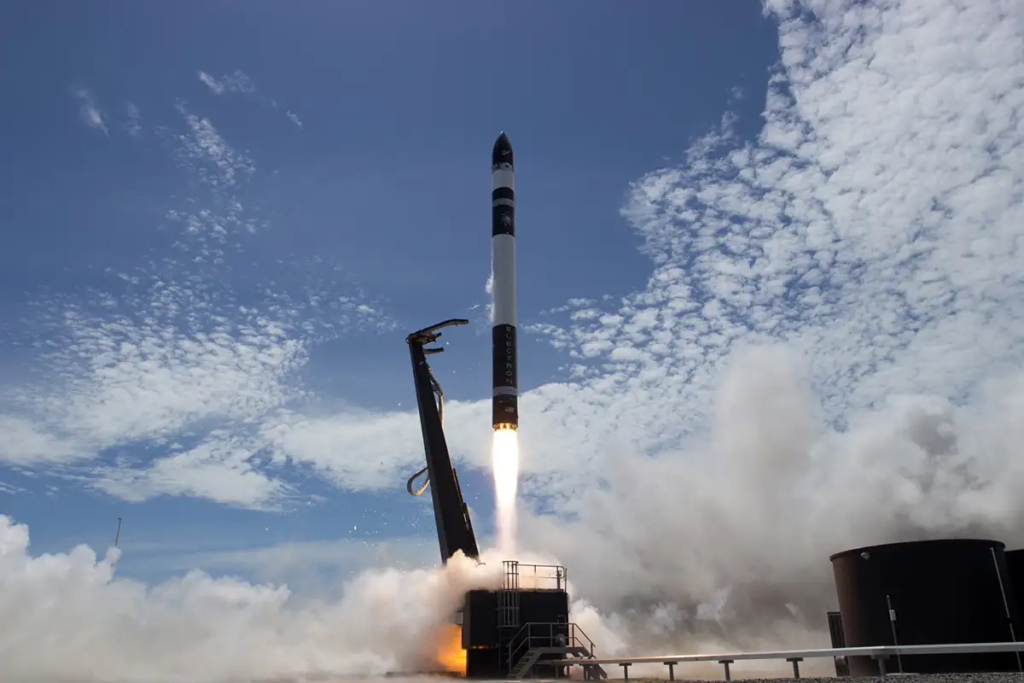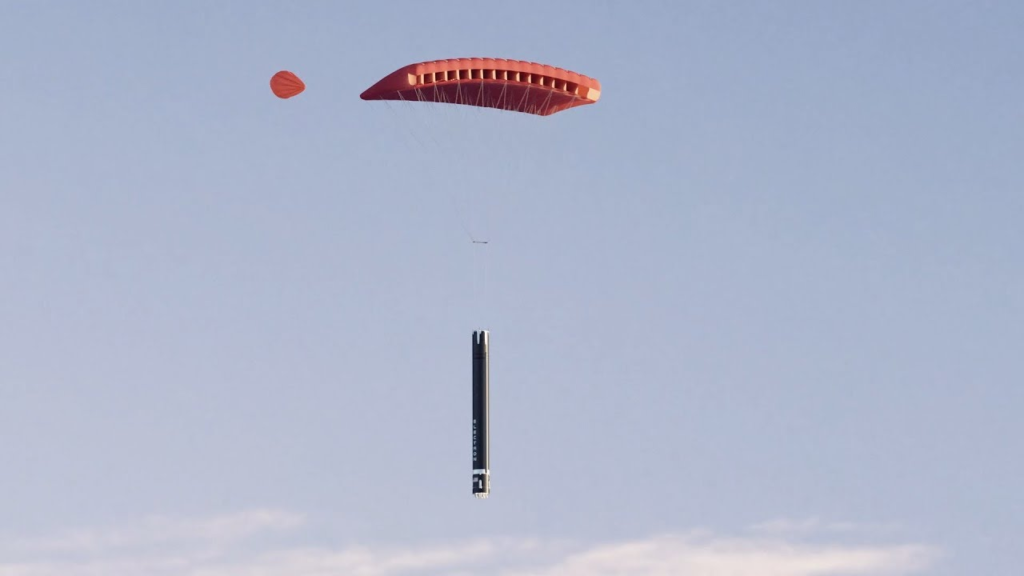
Rocket Lab Has A New Primary Method For Electron Recovery
More and more throughout the space industry, we are seeing companies shifting toward either partial or full reusability. While extremely effective if successful with large launch vehicles, even smaller rockets such as Electron can benefit as well. This is why for years now Rocket Lab has been trying to capture and reuse some core components of the Electron first stage.
The company’s original plan featured catching stages out of the air with a helicopter before bringing them back to land. However, during multiple attempts using this strategy, they were unsuccessful. This along with new information caused the company to rethink Electron reuse and try easier and more consistent methods. Now Rocket Lab just recently announced that they are about to launch a pre-flown Rutherford engine that has already been to space.
If successful, this will mark an important step toward consistent partial reusability of Electron. A valuable feature considering the rocket’s busy launch cadence and expected demand. Here I will go more in-depth into Rocket Lab’s new reuse strategy, this upcoming engine test, what to expect in the near future, and more.
Parachute to Splashdown

For a while now, Rocket Lab has been starting to rethink the best method for Electron reuse. During the two catch attempts that Rocket Lab has tried, both were unsuccessful. The first saw an initial catch made before the pilot was forced to drop the stage in the water due to different load characteristics. The second saw the team unable to rendezvous with the falling stage with weather and a few other factors influencing the mission. After that second failed attempt, Peter Beck said, “This turned out to be quite a happy turn of events. Electron survived an ocean recovery in remarkably good condition, and in a lot of cases its components actually pass requalification for flight.” This failed catch actually gave Rocket Lab the confidence to try a controlled water splashdown.
In regard to this, Peter Beck commented again saying, “Pending this outcome of testing and analysis of the stage, the mission may move us towards sticking with marine recovery altogether and introduce significant savings to the whole operation. In 2022 we proved that it was possible to rendezvous with a returning stage mid-air and get it on the helicopter hook, but if we can save ourselves the extra step by just plucking out of the water, we will. What the water landing does enable us to do is recover more vehicles because we don’t have the constraints of the operations of the helicopter,” he said. “So, financially it’s kind of the same, but we get to actually reuse more vehicles.”
These comments were months before the most recent Rocket Lab mission that attempted this strategy. Last month on March 24th, Electron launched, the booster separated, and eventually deployed its parachute before splashing down in the water for Rocket Lab to recover it. As expected, the mission went very well.
Up until now, Rocket Lab has been iteratively developing and testing two recovery methods in parallel; marine recovery where Electron’s first stage returns to Earth under a parachute for a soft ocean splashdown and recovery by boat, and mid-air recovery where Electron’s first stage is caught in the air by a specialized helicopter as the stage descends back to Earth under a parachute. Rocket Lab reported that extensive analysis of returned stages showed that Electron withstands an ocean splashdown and engineers expect future complete stages to pass qualification and acceptance testing for re-flight with minimal refurbishment.
The company then said in a statement just days ago, “As a result, Rocket Lab is moving forward with marine operations as the primary method of recovering Electron for re-flight. This is expected to take the number of Electron missions suitable for recovery from around 50% to between 60-70% of missions due to fewer weather constraints faced by marine recovery vs mid-air capture, while also reducing costs associated with helicopter operations. Rocket Lab will assess the opportunities for flying a complete pre-flown first stage booster following the launch of the pre-flown Rutherford engine in the third quarter of this year.”
Rocket Lab Founder and CEO Peter Beck commented, “By evolving Electron into a reusable launch vehicle we plan to further increase our already steadily rising launch cadence, offering more launch availability to our customers at a time when space access is severely constrained globally. Reusability for small rockets is immensely challenging as they simply don’t have the fuel margins that larger rockets have to enable propulsive landing,” he said. With this in mind, we can expect to see very few, if any future catch attempts and instead a lot of first stage water splashdowns.
First Engine Reuse

In a few past missions, while the company was attempting different reuse strategies, they managed to get ahold of intact first stage components. About one week ago the company tweeted saying, “For the first time, we’re going to launch a pre-flown 3D printed Rutherford engine. It has already been to space and back. Now it’s going again.”
Specifically, the 3D printed engine, previously flown on the ‘There and Back Again’ mission launched in May 2022, has undergone extensive qualification and acceptance testing to certify it for re-flight, including multiple full mission duration hot fires where the pre-flown engine performed flawlessly and on par with a new Rutherford engine, according to Rocket Lab. The There and Back Again mission was the first helicopter catch attempt Rocket Lab ever performed. It ended up being partially successful in that the helicopter was able to initially make contact and catch the rocket before Rocket Lab reported that the helicopter pilot detected different load characteristics than previously experienced in testing and offloaded the stage for a successful splashdown. This means that the engine about to be reused was at one point partially submerged in the ocean.
Rocket Lab’s propulsion team is now giving the engine the green light for re-flight, and it will be launched on an upcoming commercial mission scheduled for lift-off in the third quarter of this year. While the engine is ready for re-flight now, the Electron rockets scheduled for launch in the second quarter are already built with complete Rutherford powerpack assemblies so this pre-flown engine will join the production line to be integrated with an in-progress rocket.
The engine is one of several recovered Rutherford engines that collectively have now been through many successful full duration hot fires to support testing and R&D efforts for recovery. The engine joins multiple systems that have been re-flown on Electron including helium press systems. This reused engine is the next step in a reusability program that has seen Rocket Lab recover hardware and first stages from six Electron missions to date, with the latest stage recovered last month.
In reality, this recovered engine reuse mission has been a long time in the making. Late last year, Rocket Lab successfully test-fired the reused Rutherford first stage engine for the first time. The refurbished Rutherford engine passed all of the same rigorous acceptance tests Rocket Lab performs for every engine, including 200 seconds of engine fire and multiple restarts. Data from the test fire shows the engine produced full thrust of 21kNs within 1000 milliseconds of ignition and performed to the same standard of a newly-built Rutherford engine. The Rutherford engine’s production scalability is facilitated by additively manufactured, or 3D printed, primary components. With a 3D printed combustion chamber, injectors, pumps, and main propellant valves, Rutherford has the most 3D printed components of any rocket engine in the world. These primary components can be printed in 24 hours, drastically reducing production timelines compared with traditional production methods. This being said, if Rocket Lab can easily recover and refurbish them in a short period of time, it would only help lower costs and get Electron launching more frequently.
In one final quote related to launching the first reused Rutherford engine, Peter Beck mentioned, “Despite this significant technical hurdle, our team has poured relentless innovation into our reusability program and proven it’s possible to bring home small rockets and run the engines as good as new. This is a major technical achievement and sets a new standard for small launch vehicles globally. We’re in this position thanks to our diligent engineers designing robust components and over-qualifying them from the outset of the Electron program to ensure reliability, setting them up well for reuse. We look forward to continuing to rewrite the rules of small launch through reusability, while using the extensive data and experience we’re gathering along the way to inform the development of our Neutron rocket which will be an even greater step forward with a fully reusable first stage, interstage and fairing.”
Conclusion
Rocket Lab has been extremely busy as Electron launch cadence increases, they begin working on a new reuse strategy, and Neutron development starts to ramp up. While the helicopter catch attempts were exciting to watch, it makes much more sense to use a reliable and consistent method of ocean splashdown. In the coming months, we can hope to see more progress leading up to the first mission with a reused engine. We will have to wait and see how it progresses and the impact it has on the space industry.
